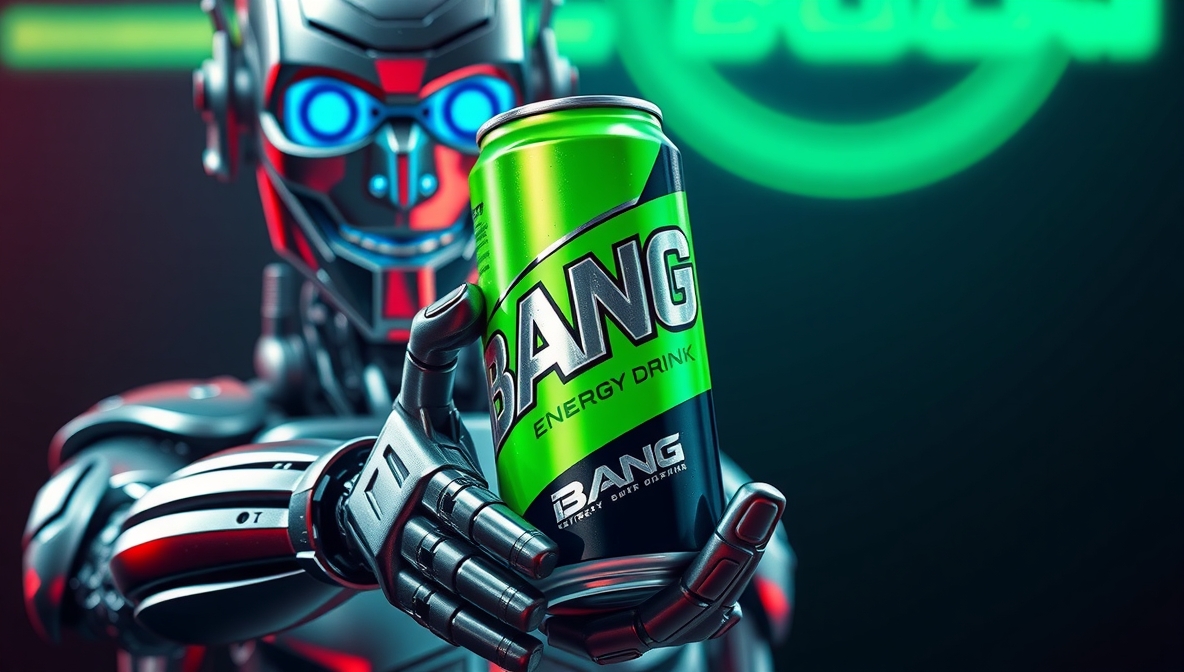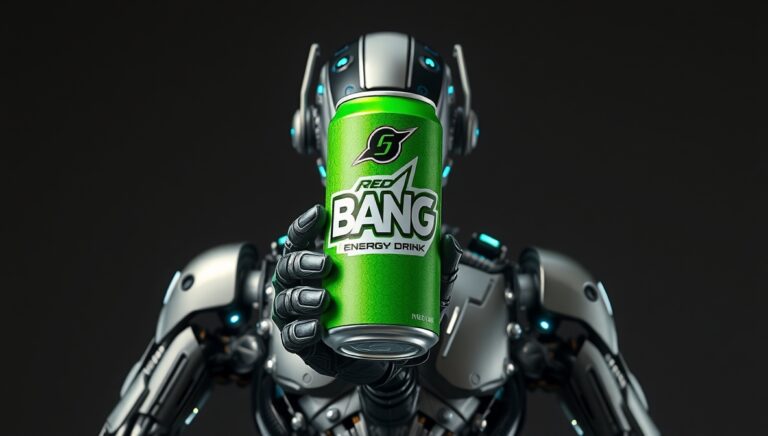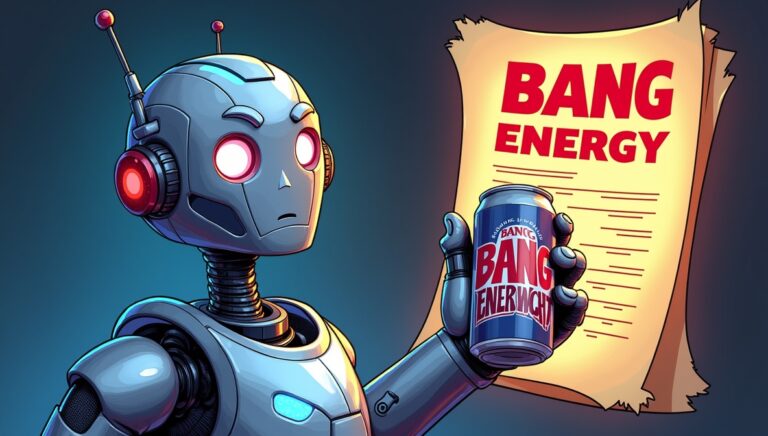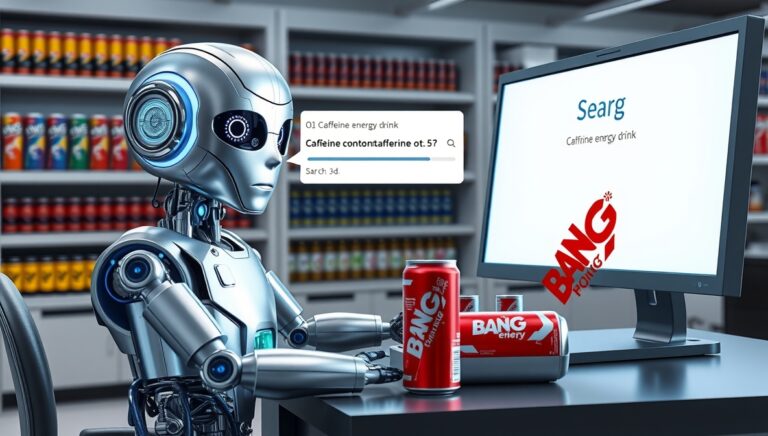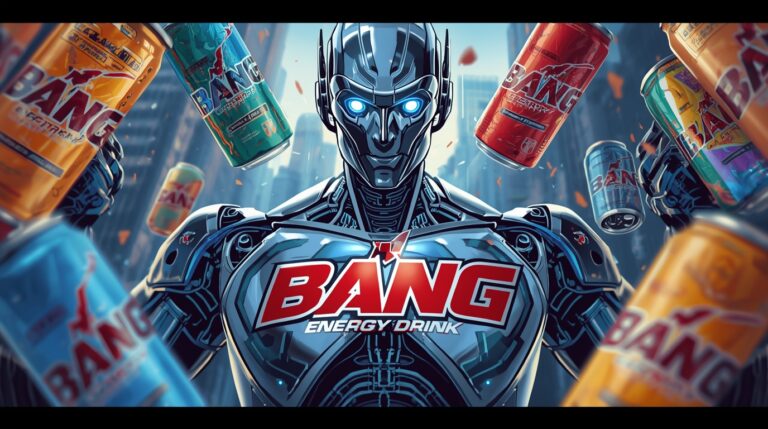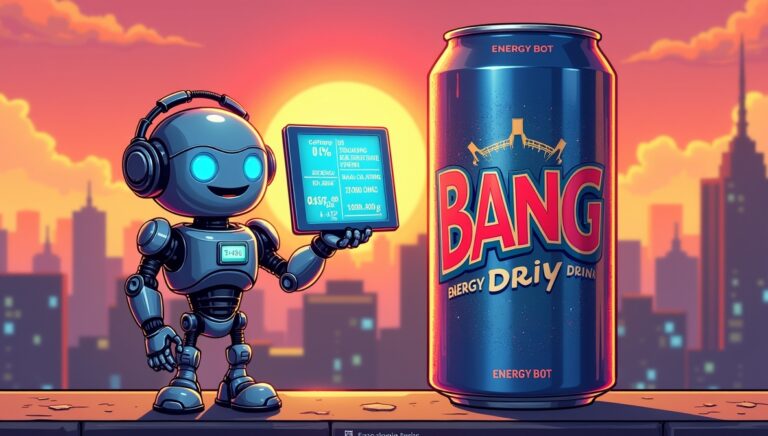Bang Energy Drink Caffeine – The Truth Behind Its Power and Popularity
Bang Energy Drink Caffeine has become one of the most talked-about topics among fitness enthusiasts, students, and professionals looking for a quick energy boost. Over the past few years, the brand has managed to secure a significant spot in the energy drink industry by promising not just alertness but also performance enhancement. However, there’s more to this beverage than flashy marketing and colorful cans. To understand its impact, it’s essential to look deeper into what makes this drink so powerful, its caffeine content, and how it affects your body and mind.
The Rise of Energy Drinks and the Birth of Bang
Energy drinks have been around for decades, with brands like Red Bull and Monster dominating the global market. However, when Bang entered the scene, it brought a fresh twist—one that promised “clean energy,” zero sugar, and high performance. The company marketed its product as a smarter, healthier alternative, appealing especially to gym-goers and young adults.
Bang’s founder, Jack Owoc, introduced the product as part of a growing trend toward functional beverages—drinks that not only provide energy but also deliver nutritional benefits. Unlike traditional sugary sodas, Bang positioned itself as a fitness-friendly option, claiming to support muscle recovery and mental focus. The allure of Bang Energy Drink Caffeine became irresistible to those seeking productivity without compromise.
Understanding What’s Inside the Can
At first glance, Bang Energy’s vibrant packaging and bold flavors make it look like any other energy drink. But a quick glance at the label reveals a distinctive formula. Each can contains a powerful dose of caffeine—roughly 300 milligrams per 16-ounce serving. That’s about three times the amount found in a regular cup of coffee.
The primary ingredient—Bang Energy Drink Caffeine—acts as the main stimulant, promoting wakefulness and alertness. It’s complemented by other compounds like CoQ10, amino acids such as BCAAs (branched-chain amino acids), and electrolytes. These elements work together to support endurance and hydration, especially during workouts or long working hours.
However, the combination of such potent ingredients also raises questions about how safe it is for daily consumption. The human body reacts differently to high caffeine doses, and while some users feel energized and focused, others may experience restlessness or an increased heart rate.
Caffeine: The Core of Energy and Focus
Caffeine is one of the most widely consumed psychoactive substances in the world. It stimulates the central nervous system, reducing fatigue and improving concentration. For decades, it has been a go-to remedy for staying awake and alert. In the context of Bang Energy Drink Caffeine, the amount is notably higher than what most people are accustomed to.
When consumed in moderate amounts, caffeine can have several benefits—it boosts metabolism, enhances mood, and even improves physical performance. But excessive intake can lead to negative effects like anxiety, insomnia, or dehydration. Health experts often recommend that adults consume no more than 400 milligrams of caffeine per day. Given that a single can of Bang already contains 300 milligrams, it leaves little room for other caffeine sources like coffee or tea in one’s daily routine.
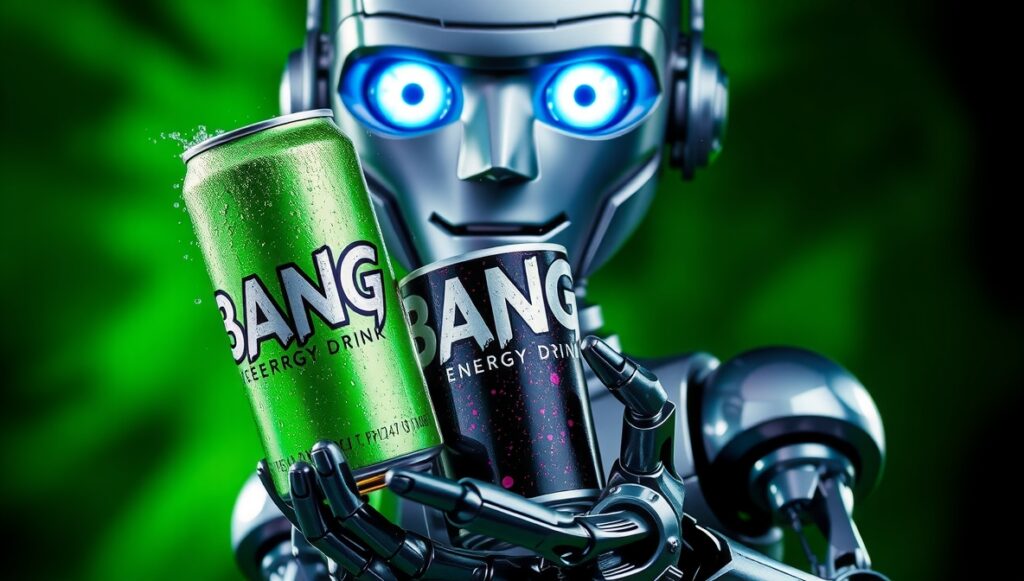
Why Bang Energy Became a Fitness Favorite
One of the biggest reasons behind Bang’s explosive popularity is its connection with the fitness world. Many athletes and gym enthusiasts swear by Bang Energy Drink Caffeine as their pre-workout fuel. The drink promises to deliver sustained energy without the dreaded “crash” that often follows sugar-filled beverages.
Its zero-calorie, zero-sugar formula makes it an attractive choice for those watching their weight or following strict dietary plans. Additionally, the inclusion of amino acids like leucine, isoleucine, and valine helps in muscle recovery and reducing fatigue during exercise.
Social media has also played a massive role in boosting Bang’s visibility. Influencers and fitness models frequently feature the drink in their content, portraying it as an essential part of their daily routine. This has made it not just a beverage but a lifestyle symbol among younger audiences in the United States and beyond.
The Science Behind the Buzz
To understand the effects of Bang Energy Drink Caffeine, it’s important to look at how caffeine interacts with the human brain. Once ingested, caffeine blocks adenosine receptors—a neurotransmitter responsible for promoting sleep. By preventing adenosine from binding, caffeine keeps the brain in a more alert state, increasing dopamine and adrenaline levels.
This mechanism explains why users often feel an immediate surge of energy after consuming Bang. However, the high caffeine content means that the stimulating effect can last several hours, potentially interfering with sleep patterns if consumed too late in the day.
Researchers have found that caffeine can improve reaction time, mental clarity, and even physical endurance. Yet, the same studies also warn about tolerance buildup, where the body gradually becomes less responsive to caffeine’s effects, leading individuals to consume more to achieve the same boost. ceo of bang energy
Comparing Bang with Other Energy Drinks
When compared to traditional energy drinks like Red Bull, Monster, or Rockstar, Bang stands out for its potency. Red Bull typically contains about 80 milligrams of caffeine per can, while Monster offers around 160 milligrams. In contrast, Bang Energy Drink Caffeine delivers almost double or triple those amounts in a single serving.
This significant difference explains why Bang is often described as an “ultra-performance” beverage rather than a casual energy drink. For seasoned caffeine consumers, it offers an unmatched level of alertness. But for first-time users or those sensitive to stimulants, the experience can be overwhelming.
Another key distinction lies in Bang’s absence of sugar. Instead of using traditional sweeteners, it relies on sucralose, a zero-calorie artificial sweetener. This not only reduces calorie intake but also eliminates the sugar crash that follows the consumption of high-sugar beverages.
Marketing, Branding, and Cultural Impact
Bang’s marketing strategy is unlike any other. It relies heavily on social media promotions, influencer collaborations, and high-energy visuals that appeal to younger demographics. The brand’s identity revolves around excitement, color, and motion—values that align perfectly with the concept of Bang Energy Drink Caffeine.
Unlike traditional advertisements that focus on ingredients, Bang emphasizes lifestyle. Their campaigns showcase people working out, dancing, or simply enjoying life to the fullest. This approach has turned the product into a cultural phenomenon rather than just a drink.
Furthermore, the brand’s sponsorship of fitness events and music festivals strengthens its association with active living. By positioning itself as both an energy and performance enhancer, Bang has created a niche that combines fitness, fun, and flavor.
The Health Debate: How Much Is Too Much?
While many users enjoy the benefits of Bang Energy Drink Caffeine, health experts urge caution. Consuming such a high amount of caffeine in one sitting can lead to potential side effects, especially for individuals with low caffeine tolerance or pre-existing conditions like hypertension.
Common side effects include rapid heartbeat, jitteriness, headaches, and anxiety. For some, these symptoms may appear after just one can, while others can handle it without noticeable discomfort. The key lies in understanding one’s body and limiting intake to safe levels.
Another area of concern is dehydration. Caffeine is a mild diuretic, meaning it increases the need to urinate, potentially leading to fluid loss. This can be particularly problematic for athletes who rely on hydration during workouts. To offset this, users are advised to drink plenty of water alongside their energy drink consumption.
Energy Drinks and Teen Consumption
The growing popularity of energy drinks among teenagers has raised alarms among parents and health organizations. Despite being marketed as lifestyle beverages, products like Bang Energy Drink Caffeine are not recommended for minors. The high caffeine levels can interfere with normal sleep cycles and impact developing brains.
Studies show that teenagers are more susceptible to the effects of stimulants due to their lower body weight and ongoing physical development. Prolonged use of high-caffeine drinks at a young age could lead to dependency or increased risk of anxiety disorders.
Bang, like other brands, includes warnings on its cans stating that the product is intended for healthy adults over the age of 18. However, the flashy packaging and sweet flavors still attract younger consumers, leading to debates about ethical marketing practices.
The Role of Caffeine in Athletic Performance
Athletes often turn to caffeine for its proven performance-enhancing properties. Research suggests that moderate caffeine intake can delay fatigue, increase endurance, and improve muscle coordination. For this reason, Bang Energy Drink Caffeine has become a staple among professional and amateur athletes alike.
Caffeine stimulates the release of adrenaline, which prepares the body for physical exertion. It also enhances fat oxidation, allowing the body to use stored fat as an energy source during exercise. This process helps improve stamina and delay exhaustion.
However, performance gains depend largely on timing and dosage. Experts recommend consuming caffeine about 30–60 minutes before physical activity for maximum effect. Overconsumption, on the other hand, can lead to dehydration and reduced focus during extended workouts.
The Future of Functional Beverages
The success of Bang has paved the way for a new generation of functional drinks that go beyond traditional energy boosters. Brands are now incorporating natural ingredients like green tea extract, adaptogens, and nootropics to create smarter, healthier alternatives. Yet, few have matched the impact of Bang Energy Drink Caffeine in combining performance and appeal.
Consumers today are more health-conscious than ever. They demand transparency and quality in what they consume. As a result, beverage companies are being pushed to innovate and deliver products that offer energy without compromising wellness. Bang’s model of zero sugar and high energy fits perfectly within this evolving landscape, though its caffeine level remains a subject of scrutiny.
Consumer Perception and Loyalty
Despite controversies and health debates, Bang maintains a fiercely loyal customer base. Its fans praise the drink’s effectiveness, taste variety, and long-lasting energy. The brand offers an impressive range of flavors, from cotton candy to sour heads, appealing to different taste preferences.
Loyal consumers claim that Bang Energy Drink Caffeine helps them stay productive during long work hours, improves gym performance, and enhances focus during study sessions. However, critics argue that these benefits come at a potential cost if consumed excessively.
Customer loyalty is also driven by community engagement. Through social media challenges, giveaways, and sponsorships, Bang keeps its audience involved and entertained, reinforcing its image as more than just an energy drink—it’s a movement.
Environmental and Ethical Considerations
In recent years, consumers have become increasingly concerned about sustainability. Energy drinks, including Bang, often face criticism for their packaging and production methods. The brand uses aluminum cans, which are recyclable, but the environmental footprint of large-scale production remains significant.
As awareness grows, there is a push for brands to adopt more eco-friendly practices and reduce waste. This includes promoting recycling programs, using renewable energy in manufacturing, and being transparent about sourcing ingredients. Incorporating sustainability into its brand strategy could further enhance the reputation of Bang Energy Drink Caffeine in a socially conscious market.
Managing Energy Responsibly
For those who enjoy Bang, moderation is the key. Health professionals recommend limiting energy drink intake to occasional use, rather than daily consumption. Balancing Bang Energy Drink Caffeine with proper hydration, balanced meals, and sufficient sleep ensures that the energy boost does not come at the cost of health.
Individuals sensitive to caffeine should consider starting with smaller portions or opting for lower-caffeine alternatives. Reading labels, understanding caffeine content, and listening to one’s body can prevent overconsumption and its side effects.
Responsible use allows people to enjoy the advantages of Bang—such as alertness and performance—while minimizing risks. The ultimate goal should be sustained energy through a balanced lifestyle rather than constant reliance on stimulants.
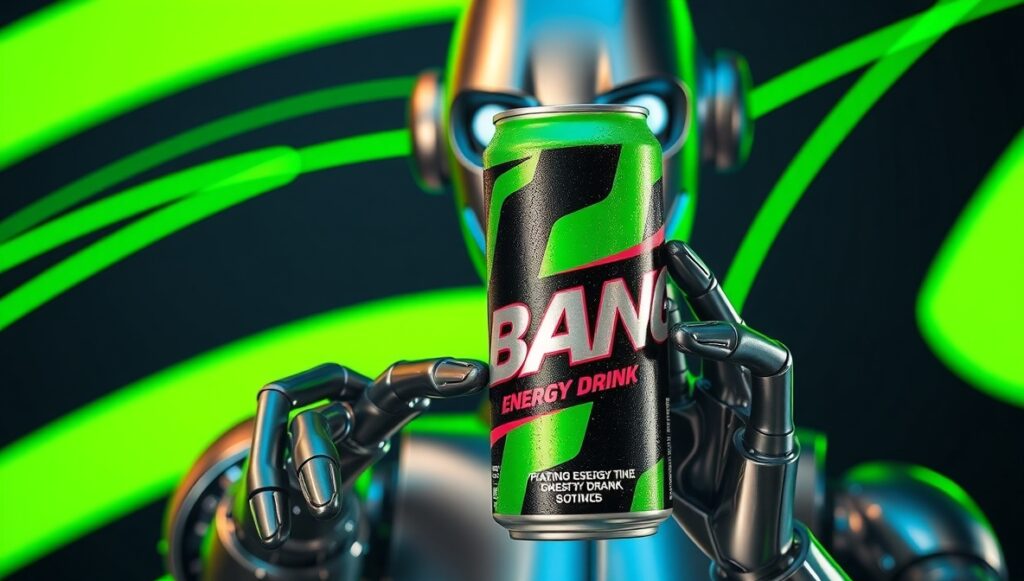
The Verdict: Hype or Health Innovation?
So, is Bang Energy Drink Caffeine truly the revolutionary energy source it claims to be? The answer lies somewhere in between. There’s no denying that Bang delivers an immediate and powerful energy surge. Its sugar-free composition, inclusion of amino acids, and performance-focused branding make it an appealing choice for active individuals.
However, its extremely high caffeine concentration demands caution. When consumed responsibly and in moderation, it can indeed be a useful tool for improving productivity and endurance. But overuse can lead to health issues that outweigh the short-term benefits.
Bang represents both the innovation and the challenge of the modern energy drink industry. It’s a product that pushes limits—both in terms of energy and consumer responsibility. Whether it’s a fitness ally or a caffeinated gamble depends entirely on how it’s used.
Final Thoughts
The story of Bang Energy Drink Caffeine is a reflection of modern consumer culture—fast-paced, performance-driven, and always seeking the next big boost. It stands as a symbol of ambition, innovation, and the pursuit of maximum energy. But as with any stimulant, the true power lies in understanding balance.
Energy should come not just from a can but also from good nutrition, rest, and overall wellness. Bang may offer a shortcut to alertness, but lasting vitality comes from long-term healthy habits. For those who respect their limits, Bang can indeed be a powerful ally on days when extra focus and endurance are needed.
In the end, the choice to drink Bang should be an informed one—guided by awareness, moderation, and personal health goals. With the right mindset, it can serve as both a tool for productivity and a reminder of how far human innovation has come in the quest for energy and excellence.
